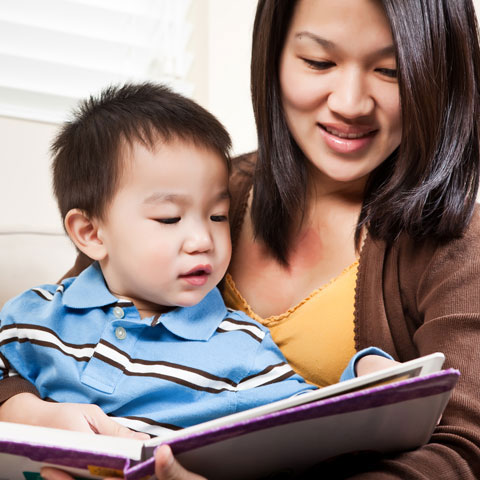Learning begins at birth and encompasses all the interactions a baby experiences with people and the world around them. A mother’s calming voice, a sister’s squealing laughter, and a grandpa’s noisy yawn all provide cues to young children that become the beginning of learning to talk.
Communication in all its forms is the essence of early literacy. Infants communicate by displaying emotion, such as crying. Toddlers utter simple sounds and often point. Gestures and sounds lead to first words. Learning to talk using a shared language opens a whole new world for children.
By listening to others talk and trying to make sounds, young children are preparing important pathways in their brain for learning more complex language skills. Reading aloud to children also influences the way young brains develop. Hearing a spoken language stimulates growth in parts of your child’s brain and starts the connections that will become the building blocks for reading. Learning a language allows us to connect with our world in powerful ways.
The experiences your baby or toddler has today with talking and listening can prepare them for learning to read and write in later years. The language spoken in your home is the language your baby needs to hear most. This builds a family connection that is essential for a child’s social and emotional development.
You can help your child develop language and literacy skills during regular activities without needing special time each day. There are also things you can do during planned play and reading times.
- Show your children that reading and writing are a part of everyday life.
- Talk to your child and name objects, people, and events.
- Repeat your child’s strings of sounds and add to them. For example, babies and young children often love to vocalize and repeat the same sound such as “dadadadada” and “bababababa.”
- Engage your child in singing and rhyming games. Instead of sitting in silence on your drive to day care, sing or share nursery rhymes with your child.
- Read picture books and repeat stories with rhymes and similar sounding words and letters. Children request the same books over and over again because each time they are learning more and recognizing specific sounds that relate to images or words in the book.
- Talk to your child during daily routine activities, such as bath or mealtime, and respond to his or her questions. For example, with your baby in a high chair, you can set the table and name each object you place on the table. Describe the color and texture of objects, then let your child touch them.
Regardless of which method you choose, you are encouraging your child’s talking.

